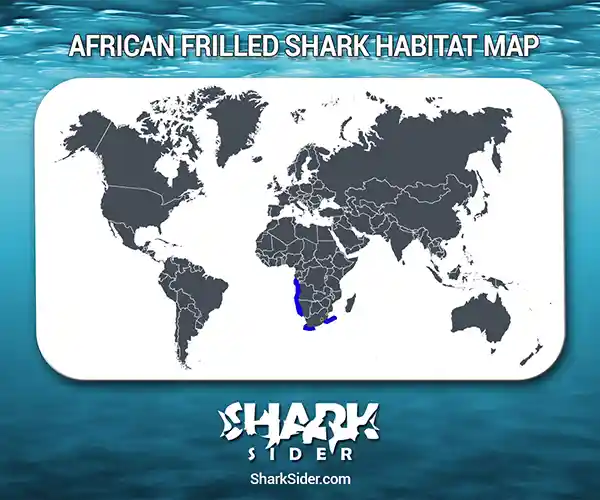Getting its name from the frill-like shape of its gills, the Southern African frilled shark is one of only two known species of deep-sea frilled sharks. It is incredibly similar to the more studied frilled shark. Still, subtle differences, such as size at maturity and head and mouth width, mark it as a different species.
South African research ship FRS Africanacaught the first specimen in 1988 in Lüderitz, Namibia. Initially, researchers named itChlamydoselachus sp. A.It was formally described in 2009 by David Ebert and Leonard Compagno and named in honor of the ship that discovered it.
African Frilled Shark scientific classification |
|
| Kingdom | Animalia |
| Phylum | Chordata |
| Class | Chondrichthyes |
| Order | Hexanchiformes |
| Family | Chlamydoselachidae |
| Genus | Chlamydoselachus |
| Scientific name | C. africanus |
Description
Of the few specimens collected, the largest is a 117 cm (46 in) long immature female. No mature females have been studied. The maximum length for mature males was measured at 99 cm (39 in).
African frilled sharks share similar features with the frilled shark, such as a long, snake-like body and broad, flat head. However, there are notable differences. The head and gill slits are longer, and the eyes and nostrils are rounder, larger, and more widely spaced. It has a wider mouth, and pectoral fins set further back along the body.
African frilled sharks are gray in life but covered by a thin membrane that makes them look dark brown. The mouth is placed terminally on the snout and has 30 and 27 pairs of teeth in the upper and lower jaw, respectively. Each of these teeth has three recurved cusps and interlocks with the tooth behind it. Six pairs of gill slits are connected under the jaw to form the characteristic “frill.” The pectoral fins are round, broad, and placed just behind the gill slits. The anal and pelvic fins are large, with long bases and curved margins. The single dorsal fin is set far behind the body, and the tail fin is somewhat triangular and is missing a lower lobe.
Where do they live
Map Of The African Frilled Shark’s Habitat

The only confirmed sightings have been along the coast of southern Angola to southern Namibia. Frilled sharks were also caught off the coast of Eastern Cape Province and Kwazulu-Natal, but it is unclear whether these are African frilled sharks. Little is known about their habitat.
Behavior
Dietary
Examination of its stomach contents revealed that this species feeds on other smaller sharks, such as the African sawtail catshark.
Reproductive
It is assumed to be aplacental viviparous like its relative. Males reach sexual maturity at 91.5 cm (36 in).
Adaptations
The African frilled shark is specialized for capturing and swallowing large prey whole. Its jaws, mouth, and stomach are highly distensible, and its sharp recurved teeth prevent escape. A notable example is a 92 cm (36 in) long specimen that had swallowed a whole ghost catshark measuring 40% of its body length.
Human interactions
They are not a threat to humans. There is insufficient data on their population and life cycle, which makes threat assessment difficult. The IUCN has labeled this species as “Least Concern” or “LC.”
